Writer, preacher, reformer, martyr. Girolamo Savonarola was an inspiration to Martin Luther and an early martyr for the Protestant Reformation. He’s also a controversial figure – more Old Testament prophet than humble friar. He tried to end the Renaissance, to create a city of God. We can learn a lot from his story today. Our guest Samantha Morris discusses her book Girolamo Savonarola: The Renaissance Preacher and the history of the “mad preacher of Florence”.
Think you could end a movement? Destroy some of the best art ever made? Nearly topple the Italian Renaissance? Of course not, but that’s what one man tried to do at the end of the 1400’s. He was a righteous man who fought against the evil of Pope Alexander the VI. But he we went too far—trying to make the world behave in a godly fashion instead of changing the hearts of Florence. In a time before the Bible was readily available in people’s own languages, Girolamo Savonarola was put to death by the very superstition he tried to defeat.
- Santa Maria del Fiore – where Savonarola preached.
- The Signoria, at the base of which Savonarola died. There is a plaque in the ground dedicated to his memory.
- Inside one of the bedroom at San Marco. The individual rooms were sparse except for amazing paintings like this.
- The stone marking the spot where Savonarola was killed.
Truce is a listener-supported podcast. Leave us a comment on iTunes and be sure to visit us at www.trucepodcast.com. You can follow us on Facebook and Twitter. Our host is Chris Staron, author of Cradle Robber and writer/ director of the films Bringing up Bobby and Between the Walls.
TRANSCRIPT
Chris Staron (CS) and Samantha Morris (SM)
CS: A quick warning. This story does contain some discussion of torture. Parental discretion is advised.
Let’s take you back. Way back. To the late 1400s. To events that shaped the world as we know it today. And a friar who influenced the course of history. And, as was the case for outspoken people of his time, we’ll also have to talk about his unfortunate end. His name was Savonarola.
SM: A lot of people say it differently. You’ve got ‘Sav-onna-rolla’, or the way you said it, which I can’t say it like that, so… [laughs]
CS: And this is Samantha Morris.
SM: And my latest book is a brief biography of Girolamo Savonarola called “The Renaissance Preacher”.
CS: She’s going to guide us through the life of Savonarola. [MUSIC] It’s the late 1400’s. Florence is the center of the Italian Renaissance. Art, culture…
SM: They liked to party. I mean, they were headed by obviously the Medici family and at that point, it was Lorenzo the Magnificent who was the de facto ruler. Lorenzo made it to the top, just as his father and grandfather had done before him. He was a price, basically. Just without the name. He had parties, he would put on jousts and massive carnivals for everyone. People would drink, there were brothels there was gambling. It was just a hodgepodge of mess and vice, basically. As well as that there was a lot of art going on. It was the heart of the Renaissance in Italy.
CS: The Medici and other families basically paid for the Renaissance. This is the era of Michelangelo, Donatello, DaVinci, and Botticelli. Paintings and statues were usually nudes, sometimes blending pagan and Christian themes together. There was the carnival, which celebrated the kingdom of the devil, included obscene antics, masks, lewd songs, and murderous rock fights between boys from different neighborhoods. [rock throwing]
SM: [laughs] Yes, I believe that happened on a yearly thing. It happened on the bridge, the Ponte Vecchio. And it ended up with a lot of rather nasty injuries.
CS: In contrast, you’ve got the convent of San Marco, which is an art museum today. When Savonarola took over leadership of the convent, they came into sharp contrast with the rest of culture. Nothing fancy was allowed at all. No silver crosses, or expensive Bibles. More fasting, prayer, and their clothing changed so that it used rougher cloth. Sounds like a great group of guys.
Savonarola preached fiery sermons against the corruption of Rome and the excesses of his day. He prophesied that a cleansing scourge would come to Florence. A ‘new Cyrus’, a conqueror who would oust the wicked leaders. And talk of an invading army seemed like noise. Rantings of a gifted speaker. Nothing more. Until it Happened.
I’m Chris Staron. This is Truce.
[Church Organ Music]
Savonarola was a loud, ferocious preacher. He believed the end of the world was coming, saying, “I am the hailstorm, the hailstorm that will smash the heads of those who don’t take cover!” And he foresaw an upcoming French invasion.
In September of 1494, Charles the 8th marched into Florence. The ruling Medici family had already fled.
SM: It gripped the population of Florence. Because they could see that what he was talking about was true. There was all this corruption and it needed to be stopped. And with this new Cyrus coming, they saw hope that the corruption in the church could be gotten rid of.
CS: The friar was a part of the group sent to discuss peace with the king. When Charles left the city, people credited Savonarola with their safety. He’d seen this coming after all. He’d kept them safe. This was a man of God. He moved from preacher to prophet. [Sinister Music] There was another key player at the time. His name: Pope Alexander the 6th.
SM: Rodrigo Borgia. He was a Spanish cardinal.
CS: He’s not the humble, soft-spoken pope you think of today.
SM: And he came to power in 1492.
CS: The same year Columbus sailed the ocean blue. Just for some perspective.
SM: He wasn’t the favorite to win the papacy then. He basically wheeled and dealed his way to the top. There was a lot of buying and selling votes.
CS: It was a practice known as simony. Buying an office with money. And this guy was the king of that. Well, the pope of that. But in that day, there really wasn’t much difference between king and pope.
SM: Corruption was rife within his court. There was also the charges of incest between Rodrigo Borgia
CS: And Savonarola would have known that. And he would have been aware of Alexander’s 8 children by 3 different women, by one estimate.
SM: And that was his aim, basically– to get rid of corrupt popes like Alexander the 6th. Not that it worked. [Laughter]
CS: Savonarola saw all of this and he happened to be a very popular preacher at the time. Really large crowds attended sermons in the church of Santa Maria del Fiore, the beautiful, giant green and white Duomo at the heart of Florence. There are pictures on our website. It looks like a church built out of candy.
With the Medici gone, those wealthy people who paid for the Renaissance, there was a power vacuum that needed to be filled.
SM: Savonarola filled it. It was his machinations along with a hugely anti-Medici government that filled that vacuum. They turned it back into a republic, basically.
CS: This meant restoring a somewhat democratic form of government. He advocated for a new bank which was free of excessive interest that took advantage of the poor. And now people condemned to death could appeal their cases to a higher authority. These were huge steps in a town of haves and have-nots. Savonarola also used the printing press to spread his teachings, and in the people’s native language, just as Martin Luther would do 30 years later. He may have been the most published author in Italy in his era.
But There were harsher reforms. Savonarola trained a group of boys in his service.
SM: He used the boys who had previously been involved in those fights on the bridge with the stones. He brought them in and made them into, like, little armies of what he called angels. They were trained to go around, praise the word of God, praise the word of Savonarola. To put fear into the hearts of anyone who was going against what Savonarola had brought in. Every time they would, like, troupe on past if someone was gambling or if there was a prostitute about, you can only imagine just how frightening it would have been to see these white-robed boys coming towards you if you’re doing something wrong. It must have been quite frightening.
CS: This was no small group. Estimates at the time put the number of boys at some of these events between 4,000 and 10,000 kids, in a city of about 50,000 total people. A huge percentage.
SM: Oh, yeah. A huge amount of them. It was them who was sent around to people’s houses to get the vanities that were being burned. And if they didn’t hand over these vanities, then the boys just went in and got them. Terrifying little… I don’t want to say what I want to say there because it’s very rude. [Laughter]
CS: They would take these vanities and burn them in gigantic bonfires. They burned mirrors, a Donatello statue, playing cards, obscene pictures…
SM: Scrolls and books, bawdy books and plays, gowns, makeup, wigs, anything that could distract a person from God’s work.
CS: Their goal was to clean up the city. And they did. But in the process, they angered people who longed for the days under the Medici.
SM: In the end, that power vacuum that was taken over by Savonarola and the government ended up being taken over again by pro-Medici individuals.
CS: Savonarola, even though he didn’t hold a public office, was in ‘power’ you know, because people listened to what he said, for about four years. And all of that was done with preaching.
SM: But that couldn’t happen forever.
CS: For one thing, supplies were cut off from Florence. Pisa was their main port town, and it was at odds with Florence because Florence supported the king of France. This created a famine. Then there was a plague. Florence was supposed to be the new Jerusalem. God’s holy city. How could this be happening to them?
SM: With someone seen as a prophet and a holy man at the head of the city if this pestilence and famine happens then what’s he going to do about it? They must have thought, well Savonarola can talk to God and pray on our behalf and stop this from happening. But obviously, it didn’t. One can only imagine just how rubbish that made people feel. And how they thought, oh, hang on a minute, this guy isn’t what he claims to be.
CS: Then there was that little pope problem. Remember, before the Protestant Reformation people didn’t just call out the pope. Even if he did buy his way into office, kill his enemies, and father illegitimate children. He was still considered infallible. What he said was the law of the land, no matter how corrupt he was. In other words, the pope didn’t take well to criticism.
SM: He preached against him over and over again. And he also wrote letters to rulers of other countries, including Henry VII of England, just saying ‘look, this pope he’s out of control, he’s corrupt, he’s not good for the church. We’ve got to get him out.’
CS: There wasn’t much Rome could do right then. Savonarola was popular, seen as a Florentine treasure. And actually, he was seen as a prophet.
SM: He never actually called himself a prophet. It was only other people who put that mantle upon him.
CS: The pope demanded that Savonarola come to Rome for trial. But Savonarola knew that if he did that he’d be killed. So he wrote the pope say that he’d pass. He wasn’t feeling well. I wouldn’t be feeling well either if the pope wanted my head. For his refusal to go, and everything else, he was excommunicated in 1497. No more preaching. Well, for a few months. Then he started again.
Florence found itself faced with an interdict. This takes some explaining. Remember: this is pre-Reformation. If you were a Christian in these times you probably believed that communion was necessary for your salvation, as were the other sacraments. The pope could declare that nobody could partake in the sacraments in Florence. If you can’t get communion, you can’t go to heaven. He’d put the fear of hell into everyone in Florence. That was the power of an interdict. It would also remove the city from the good graces of more obedient neighbors. So Florence could be attacked. That plus the famine, add in pressure from Medici supporters, and Florence was in bad shape. And all that led to the fire challenge.
SM: It was on the 25th of March, 1498 that a Franciscan friar named Francesco di Puglia. He was preaching in the church of Santa Croce and it was him who challenged Savonarola to the walk through the fire. The government, the Signoria, jumped at the chance to actually prove that this guy was fraudulent.
CS: They were straddling the Middle Ages and the Renaissance. Superstition and the age of reason. They believed that, if Savonarola really was holy, then he couldn’t be burned with fire. Like tying the hands of a witch and throwing her in the lake to see if she’d float. It was raw, unbridled superstition.
SM: His fellow friar agreed to do it. It was all ready to go, but there were arguments going on between the two sides, the Franciscans and the Dominicans. Because the Dominicans they wanted to carry the host through the fire and also wear a robe, and the Franciscans were like, ‘no no no, you can’t do that. You can’t carry the host through the fire because it’s holy. If you carry that through you’re committing blasphemy’. So there were these huge arguments going on.
CS: This was April 7, 1498. People gathered in the plaza in front of the government palace.
SM: And then eventually, over came the rainclouds and there was a downpour, putting out the fire. So, a lot of people saw that as God saying, ‘no. This is rubbish. It’s not going to happen.’
People were wet. Cold. They’d stood in line for hours. Worse yet, they didn’t get to see the miracle they were promised. Their prophet, Savonarola, never got to prove that he was blessed.
Savonarola and his men were taken under heavy guard back to San Marco, the monastery. Angry mobs flanked them on all sides. They attacked the building.
SM: It’s known now as the siege of San Marco and there was a lot of fighting, a lot of violence. And it was there that Savonarola and two of his fellow friars were arrested and taken off. Because people were fed up with it. Everyone had turned on him and they wanted to work with the pope now, and they wanted to get rid of the excommunication and the interdicts over the city. They wanted him gone. In they came, arrested him, and that was the beginning of the end.
CS: The people took him and two other friars to be tortured. Rome wanted to try him. The pope had sent his own men to torture Savonarola. They were there to represent a holy, pure, and unified church. And yet… one of them was given the gift of a widow woman for his troubles. In other words, this guy from the church was given a prostitute as a ‘welcome to Florence’ gift. Such was the state of the church at the time. They tortured Savonarola by strappado.
SM: The arms would be tied behind a person’s back. And then you would be hoisted into the air and then dropped so it would pull the joints out, your shoulder joints out. It must have been agonizing. And they did that over and over again until they got what they wanted out of him, which was an admission that he was a heretic.
All three of them were stripped of their rank and defrocked. And with every layer of clothing that was removed each charge was repeated. It was a big show, basically, like these executions normally were. And it was to remind these men right up to the moment of their death exactly what they’d done. Their tonsures were shaved off as well.
CS: A tonsure is a ring of hair around an otherwise bald head, common among the friars.
SM: They were taken along to the scaffold that had been set up. It was a giant scaffold set up in the piazza. Kindling had been arranged under the gallows, which would first hang them and, as they were hanging and choking to death, a fire would be lit beneath them. It was, of course, it was surrounded by people, loads and loads of people who were expecting a miracle. Fra Silvestro was led to his death first, but the rope that was put around his neck it was too short. So when he was pushed from the ladder to hang, he just hung there choking. He kept repeating the word, “Jeshu”, over and over again. It was an intentional mistake so he would feel every lick of the flames. Which I think is quite horrible.
But when it was Savonarola’s turn he didn’t say a word at all. He just climbed the ladder and all he did was really pray. He was still praying as the rope was put around his neck and he was pushed from the ladder to hang there. And then the fires were lit.
CS: They died on May 23, 1498.
SM: They then pulled down the scaffold and scooped up all the ashes into a cart, took it off to dump it in the river Arno.
CS: What do we take away from this? From the life and death of this man? First, we have to consider his legacy to other reformers. He was one of the early men bold enough to publicly question the corrupt church.
SM: He was one of the very very early reformers who came even before the Protestant Reformation in Germany and here in England. He was a huge influence on those later reformers. And Martin Luther read Savonarola’s works and he took from Savonarola a lot of his ideas about the corruption of the church and how differently it should be.
CS: Luther published Savonarola’s meditations on Psalms 32 and 51, calling them “a piece of evangelical testing and Christian piety”. The Reformation monument in Worms, German features a statue of Savonarola right at the foot of Martin Luther. The world is a different place because of these men. I asked Samantha why she liked Savonarola so much.
SM: I think it’s because he believed so wholeheartedly in what he was fighting for. He knew what he wanted and he was going to fight for it. Even right up until the end. He might have turned around during his torture and said, ‘Oh no, I wasn’t a prophet, blah, blah, blah.’ In the end, he turned around and said, ‘actually no, I only said that because you were hurting me.’ And then up until the moment of his death, he was still praying he still, he was still fighting even then for what he believed in and I like that in a historic person. I think it shows strength of character. You can see his influence on the city even now. Even without reading about him. It’s fascinating, I love it. [Laughs]
CS: In one light, he was a man of God. He was responsible for great things in Florence. He taught people that they could question the pope’s decisions and his lifestyle, he brought Florence back to a republican form of government.
On the other hand, he acted like a bully. The boys, his angels, got way out of hand. For this reason, he is often referred to as the “mad” preacher of Florence. It makes me think about our times now. Are we, as Christians, a force for good, or are we trying to use our power to bully other people? To become rule followers instead of Christ followers?
You can find out more about Samantha Morris and about her books on her website theborgiabull.com, and at our website at Trucepodcast.com. There you can also find out how to support this show, it is financed by listeners, and you can read more about my novel Cradle Robber and my film Bringing up Bobby. We’re also on Facebook, and we’d love to hear what you think about the show.
I’m Chris Staron. This is Truce.
[MUSIC]
CS: Hi, I’m Chris Staron, the creator, and host of Truce. Here’s the thing: there’s not much in the way of Christian podcasting right now. What you mostly hear is talking heads, people giving their opinions, reading the Bible, and delivering sermons. What you don’t hear a lot of is reporting, still that takes time to bake and marinade and really gather facts. That’s what we’re trying to do here on Truce. But, that’s a pretty new thing. And, being that its new, a lot of advertisers aren’t sure that there’s even that many people listening. So we need a few things from you. Please go to iTunes and leave us a positive review, preferably with 5 stars. It helps our ratings on iTunes, which, in turn, gets us more listeners. Thanks for your commitment to Truce, and I hope to be able to deliver you more content in the future.
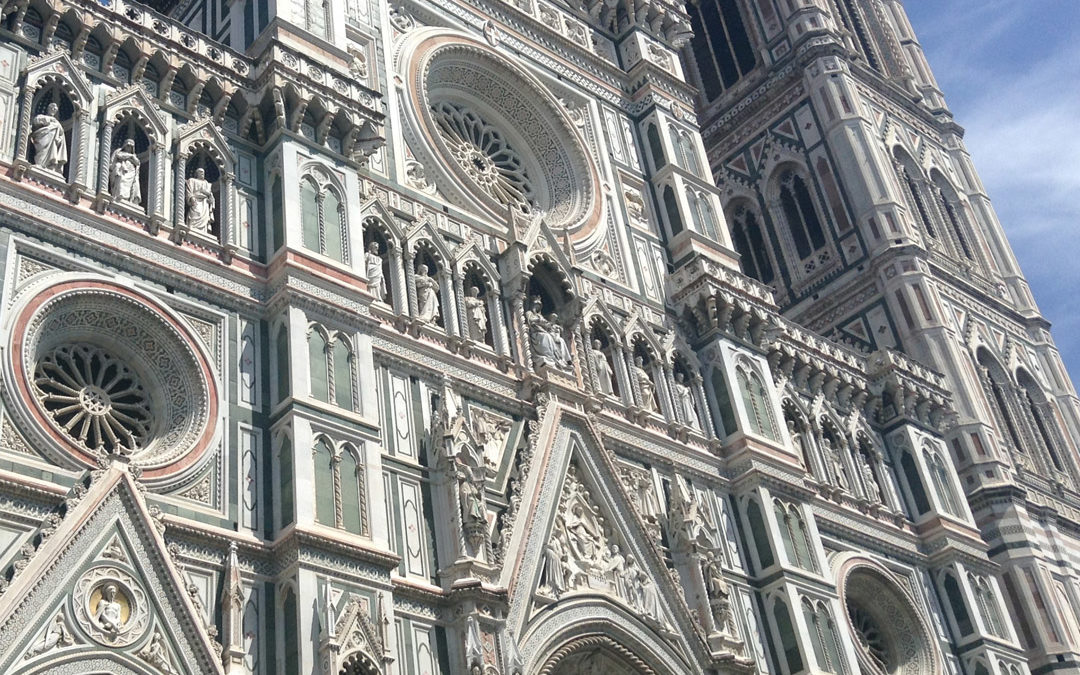
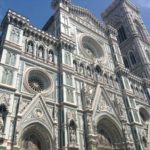
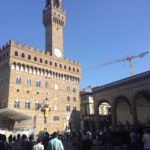
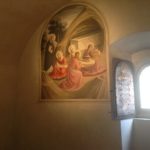
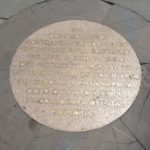

Excellent! Getting ready for my third trip to Florence!
It is an amazing and beautiful city!
Loved this! Thank you for the facts and inspiration, artful and accessible articulation.
Thanks for saying so! This episode is one of my audience’s favorite episodes. I think Sam’s passion for the subject really comes through in it. Godspeed!
Do you have a source of quotes by Savonarola?
If I said them then they came from “Fire in the City” by Lauro Martinez. If Sam said them then they would have come from her book. Hope that helps!
Wow. This was so educational. I grew up hearing the quote from Savonarola I do better in a room with a few kindly souls.
This was a beautifully written article. Thank you so very much.
Thanks so much! What you read is a transcript from an episode of a podcast. Feel free to subscribe to the show anywhere you get podcasts! It’s a good script, but a better audio story. Hopefully I can eventually transcribe all of the episodes, but I am too busy making the show at the moment.